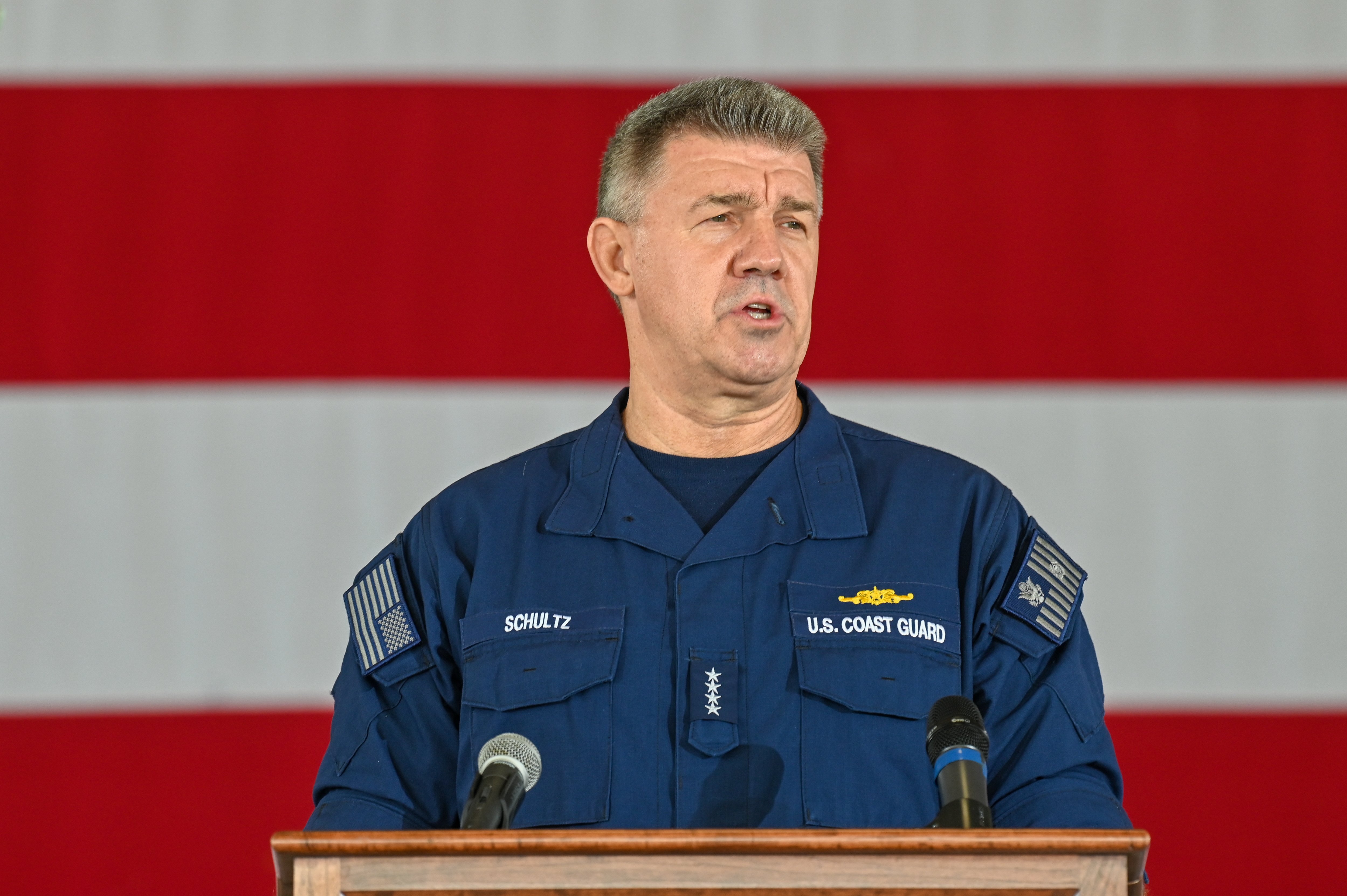
SAN DIEGO, Calif. – The Coast Guard remains in big demand at home and overseas as it continues to modernize the service and develop its force, the service’s top officer said in an annual address last week.
Speaking Thursday in a hangar in San Diego for his third “State of the Coast Guard” address, Adm. Karl Schultz went over operations and work in 2020, including drug interdictions, domestic disaster support, reserve mobilizations to support the COVID-19 pandemic missions and, most recently, FEMA-led vaccinations. He highlighted new initiatives to update the fleets of cutters, boats and aircraft, and diversify and strengthen the workforce to continue to make the Coat Guard strong, capable and relevant in any region where its units operate.
Schultz recently signed the 2020 Tri-Service Maritime Strategy along with Chief of Naval Operations Adm. Mike Gilday and Commandant of the Marine Corps Gen. David Berger. That strategy notes the Navy’s priority to control the seas, the Marine Corps’ increased expeditionary combat power and the Coast Guard’s expansion global outreach.
“We bring a range of maritime capabilities to bear across what I like to refer to as the cooperation-competition-lethality continuum,”, Schultz said Thursday during his address.
“While we train and operate across the entire continuum, it is in the cooperate-and-compete areas where we thrive and best demonstrate our value to the nation” that positions the Coast Guard to better support the new strategy.
The new strategy “sets the bar that we’re going to interoperate, it’s going to be a joint approach to maritime operations,” he said to reporters during a media conference call after his speech.
It also comes as the Marine Corps is making significant changes to its force structure and doctrine – changes that senior leaders believe will better position it for future fights against capable peer adversaries. That can alter how the Coast Guard fits in and where it might position itself to be a relevant and capable joint maritime partner.
“You’re looking at a different Marine Corps model here in the decade ahead a little bit, with more focus on the Pacific and… more disaggregated forces,” Schultz said. “I think there’s maybe some new, complementary places where the Marine Corps and the Coast Guard can work in that part of the world.”
The Coast Guard is bringing some might to U.S. maritime capability and capacity with its growing National Security Cutter fleet. “They’re not ballistic missile shooters, but not every place you need a ship or warship that needs to have that BMD capability,” he said. “We can free up key shooters to be at the places they need to be and we can do sanctions work, we can do [illegal, unreported and unregulated] fisheries, we can do other types of patrols – we’ve done Taiwan Strait transits. I think that’s the mindset.. how do you think about the nation’s maritime capability through the broadest of lenses, and how [do those] Marine-Coast Guard-Navy pieces fit together?”
The Coast Guard is “written into the war plans, theater plans, for roles that I won’t talk about here,” he added. But the Coast Guard can work in those areas with partners like Australia in patrol-boat maintenance or training, for example, among many other missions. The tri-service strategy, said Schultz, “forces us to be a little more purposeful, look for those opportunities and really take that strategic focus. The Indo-Pacific is a vast region.”
Expanding Presence and Influence
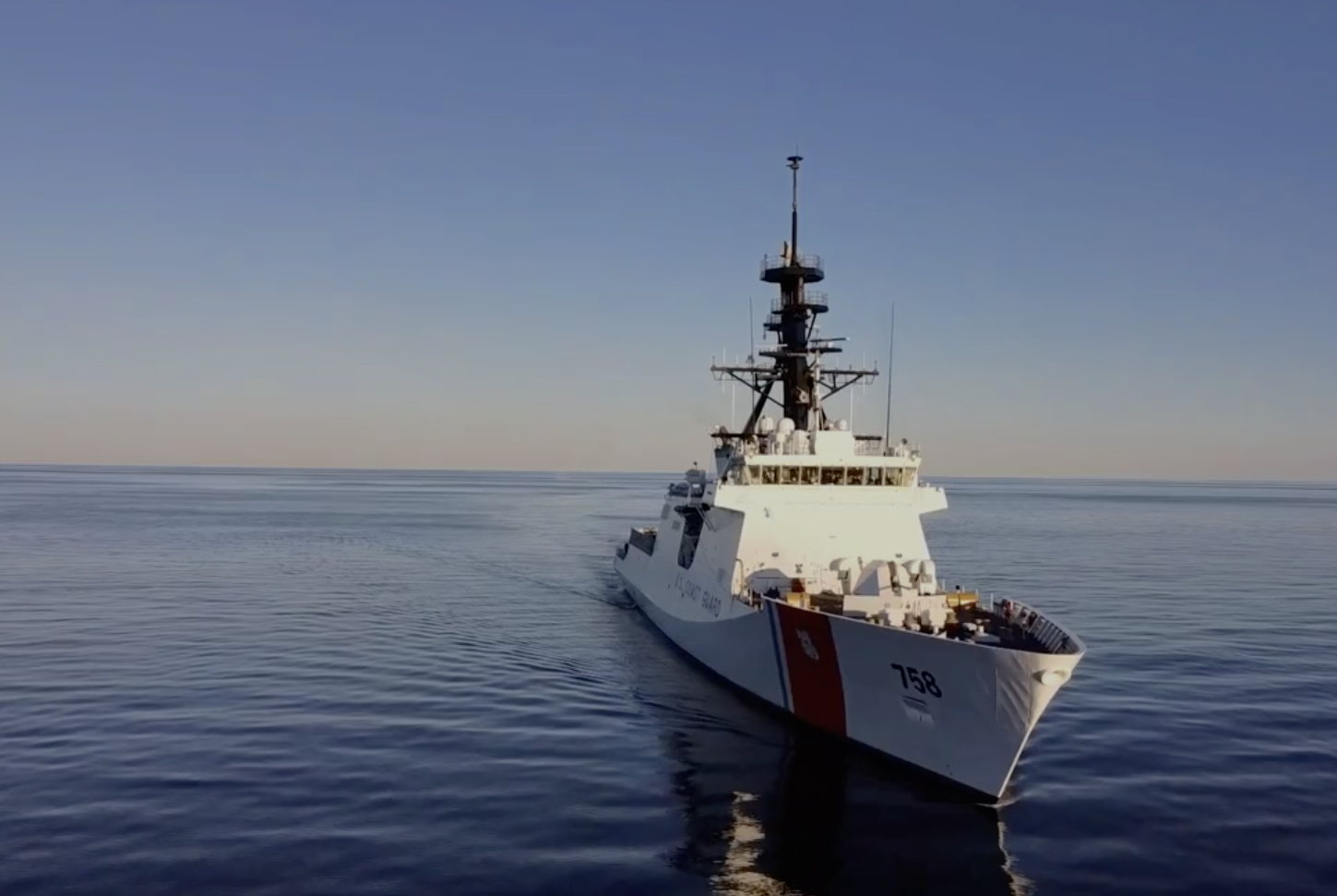
The Coast Guard is growing presence in other regions. Later this month it will send NSC Hamilton (WMSL-753) to the U.S. European Command region, a deployment also enabling Hamilton to escort two Fast Response Cutters to U.S. Central Command, Schultz said. The FRCs will replace six 110-foot patrol boats currently supporting Navy operations in the region.
While the first two NSCs will go to Bahrain to support Patrol Forces Southwest Asia, “they’re going to spend some time in the EUCOM theater,” he said during a media conference call after his address. While he declined to say what Hamilton’s mission is, he noted “the Coast Guard brings some unique, complementary capabilities.”
“This deployment is going to have a EUCOM focus, in addition to delivering some ships,” Schultz continued.
“We haven’t operated in that world for a few years, supporting the EUCOM commander,” he added.
The Coast Guard is also growing its presence in other ways with attachés. Later this year, it will assign a Coast Guard attaché to the U.S. Embassy in Copenhagen to service Denmark and Norway to “advance our national interests and work with our allies and partners to ensure a safe, secure, and cooperative Arctic as our strategic competitors maneuver for advantage in the region,” Schultz said in his address. Last November, a Coast Guard attaché was assigned to the U.S. Embassy in Canberra, Australia, to also provide regional services to New Zealand and Papua New Guinea. Next year, a Coast Guard attaché will work in Singapore.
“I see these strategically-placed Coast Guardsmen making a big impact with our global maritime partners. This is part of our effort to increase our footprint in the Indo-Pacific, doubling-down on operations and engagements,” he said.
Pacific Challenges
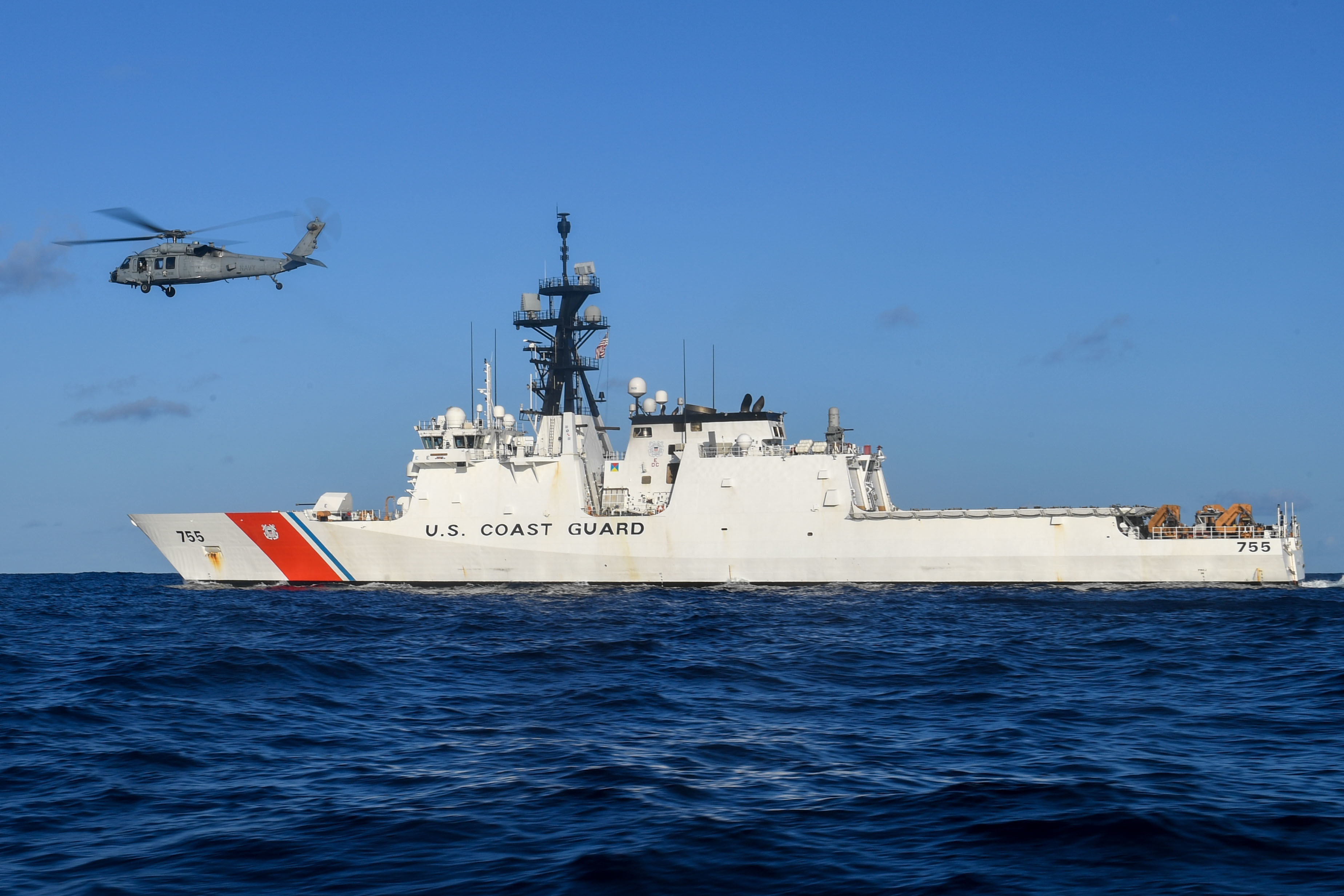
The Coast Guard’s growing presence in the Indo-Pacific region, which includes more patrols and liaising with foreign partners and allies, comes amid continued rising tensions driven largely by China’s actions in the maritime environment.
There’s growing concern over China’s recently-passed law that, effective Feb. 1, gave the Chinese coast guard, the largest in the world, broad authorities, including using force in disputed places. “That’s something we pay attention to,” Schultz said during the media conference call, noting the United States follows “international rules-based order. We project that maritime governance.”
The Chinese coast guard does more than just typical coastal patrols. It “has ships bigger than… Aegis cruisers, Flight III Aegis cruisers, 10,000-ton ships, and they operate in that ‘first island chain’ and it’s a little bit of the actioning arm for the [Chinese Communist Party] government,” he said. The PLA Navy “tends to stay out of the aggressive stuff, but between the coast guard and the People’s Maritime Militia, you sort of see that as the actioning arm.”
And they’re not just operating in waters near mainland China.
Last year, China’s long-distance fleet operated off Ecuador, raising further concerns about IUU fishing. The U.S. deployed the NSC Cutter Bertholf (WMSL-750) last summer at the request of the Ecuadorean government. “I think we have a voice that says, I think this is how the world’s best coast guards operate,” he said, noting that often such IUU fishing vessels operate uncontested with little enforcement and oversight. “We champion transparent, rules-based order,” he added.
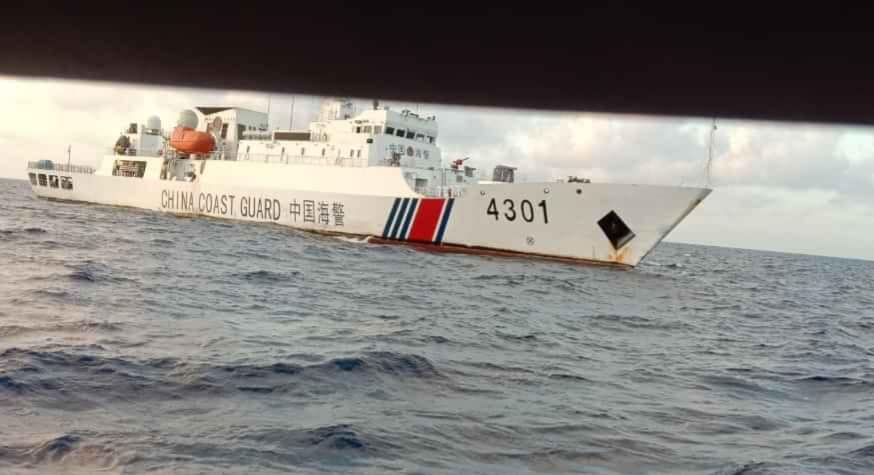
Such IUU activities have wide impacts, ranging from environmental and ecological damage to threatening sovereign rights to fish stocks and food supplies, as well as coercive treatments of ship crews and workers. In the Ecuador mission, Schultz said, the Coast Guard helped locate the Chinese fleet, which numbered in the hundreds. The NSC Cutter Stone (WMSL-758) spent two months working with several allies on IUU patrols in the South Atlantic, an area where China has a growing presence and relationships with several nations.
The planned basing of three Fast Response Cutters at Apra Harbor, Guam, will help respond to and support allies, and uphold international agreements around the Pacific. Each FRC has a 10,000-mile reach, he said, and “we’re going to push them out to some of the outer reaches of Oceania. We’re going to team them up with National Security Cutters on occasion.” The NSC Cutter Kimball (WMSL-756) currently is in U.S. 7th Fleet, providing coverage for INDOPACOM that had been gapped after last year’s fire aboard Cutter Waesche (WMSL-751) sidelined the ship until repairs were done.
The Coast Guard provides combatant commanders with specialized capabilities, including in law enforcement and other “people-to-people” relationships and partnerships that are key to missions in places like Oceania and Pacific island-nations, Schultz said. The service has been working with Australia on its new patrol boat program, and with the ongoing quadrilateral security dialogue between the U.S., India, Australia and Japan. “I think there’s a lot of progress there in how we work together,” he said.
“I think that’s a place where we compete with China… our sweet spot,” he added.
Aviation Advances
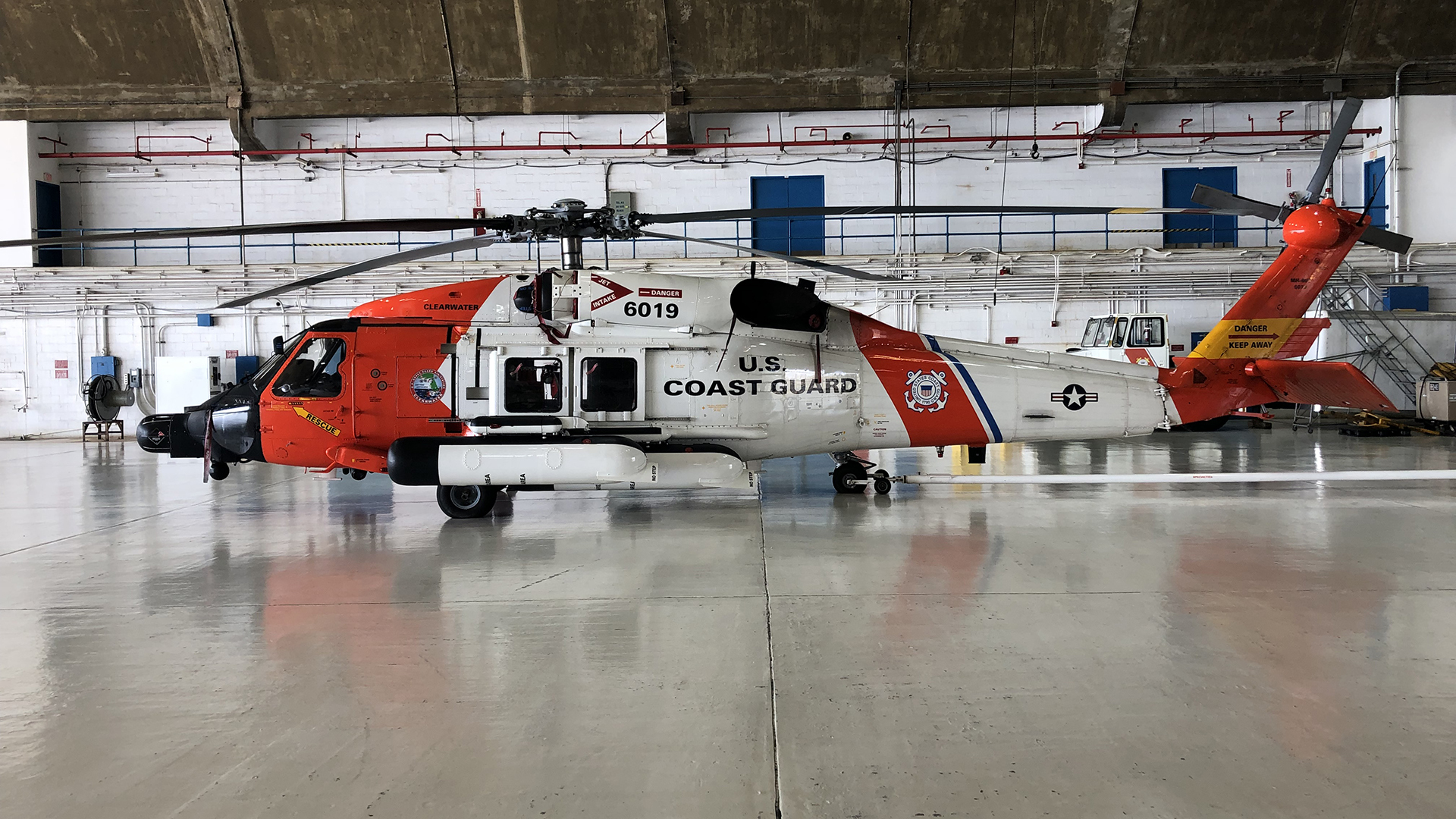
With the changing fleet of cutters comes some key opportunities to modernize vertical-lift capabilities and bolster the aviation capability at sea. “I see the future of the Coast Guard is going to be shipboard, deployed rotary-wing aviation capability,” Schultz said during the media call, noting interest in the Army-led future vertical-lift initiative.
He recently saw a prototype of the MH-60T with a foldable blade-and tail rotor under development, and that capability means those helicopters can deploy and operate from smaller hulls. Its capability of a 4-hour-plus mission window – much longer than the Dolphins’ 90-minute mission profile – means “it’s a more powerful, capable aircraft,” he said. “Not to diminish what our Dolphin helicopters are doing, but I think it increases the bubble around our ship to really be effective.”
With planned placements of the MH-60T to sea on NSCs and Offshore Patrol Cutters, the helicopters would be hangared to more protected from the sea. Its future use on Polar Security Cutters also would add significant mission capabilities in the Arctic region due to its longer range.
The current inventory of 98 Dolphins is finite – it’s not built anymore, he noted, and so the availability of parts for the future remains a concern. With that eventual drawdown, the Coast Guard will “draw up” its nearly four-dozen inventory of the upgraded MH-60T Jayhawks. Those include several converted Navy helicopters – “sundowners” – that have some 8,000-9,000 flight hours. The Coast Guard converted the helicopters so they could provide 20,000 new hours, Schultz said.
While the service continues to weigh its future-aviation capabilities, “my focus is going to be this interim, decade-plus period,” he said.
Under the new administration, the Coast Guard priorities haven’t really changed, he said. “What we’ve got to figure out is, there’s a finite amount of Coast Guard,” he said. A nearly decade-long, no-growth budget due to prior sequestrations and flat funding still puts the service behind. “We’re trying to close that gap and make some progress,” he said. Among the service’s priorities is investments in infrastructure to include renovating old facilities and building new housing.
The Fiscal Year 2022 budget is in the works and the Biden administration is expected to unveil its submission in May. “I’ve put my voice into the new leadership here. It’s been welcomed, so we will see,” he added. “We are going to continue to show the value of the Coast Guard, take some risks, do more… and hopefully some funds come to maybe support that to do more on a sustained basis.”
Priorities in the Force
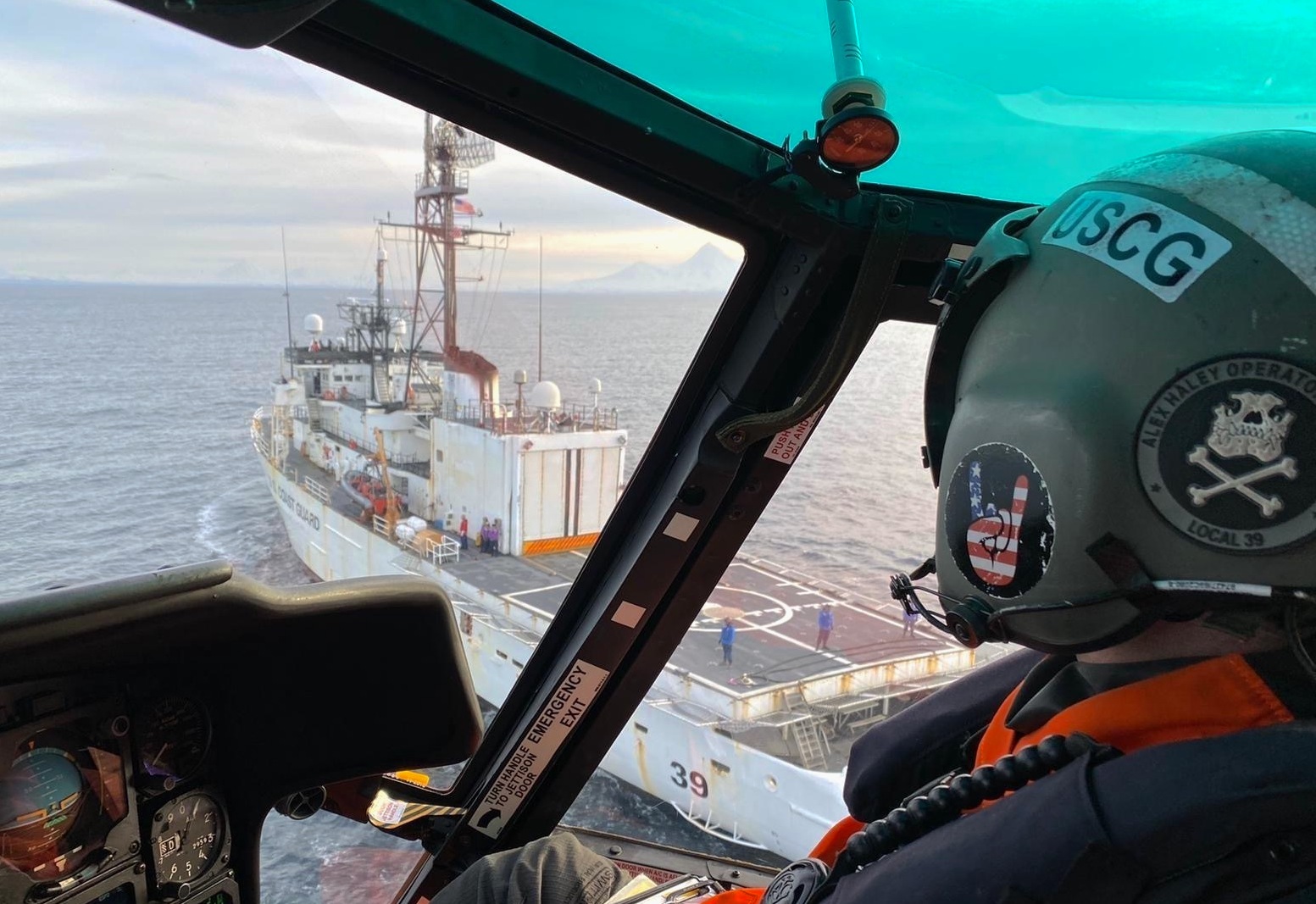
Schultz focused much of his address on readiness with particular emphases on recruiting, training and retaining, as well as diversification, of the the 57,000-member workforce. “To be a more diverse Coast Guard, we’ve got to be the absolute, more inclusive Coast Guard,” Schultz said during the media call, “so everybody who comes in has a positive experience, sees themselves valued by shipmates and there’s room for everybody to succeed.”
He wants to see more women join the Coast Guard. Currently, women represent about 15 percent of the force, far less than the 50 percent reflected in society. “We are missing opportunities here. Women can serve in just about every platform.”
While older legacy ships restrict assignment of women, the new cutters will provide more opportunities for women starting with the new Waterways Commerce Cutters, with the first contract coming in the spring of 2022, he said. “I’m excited about that. We want to avail all Coast Guard opportunities to both genders.”
Schultz, a 38-year veteran, said “we want to be a Coast Guard that’s more representative of the nation we serve, in terms of our demographics,” and also that recruits and maintains talented, skilled members, but the service remains a largely White force. Only six percent of the Coast Guard are Black, much less than the overall U.S. population, for example. Faced with decreasing interest among younger people to join the military, he said “we’ve got to show opportunities in the Coast Guard.”
Schultz announced several other initiatives:
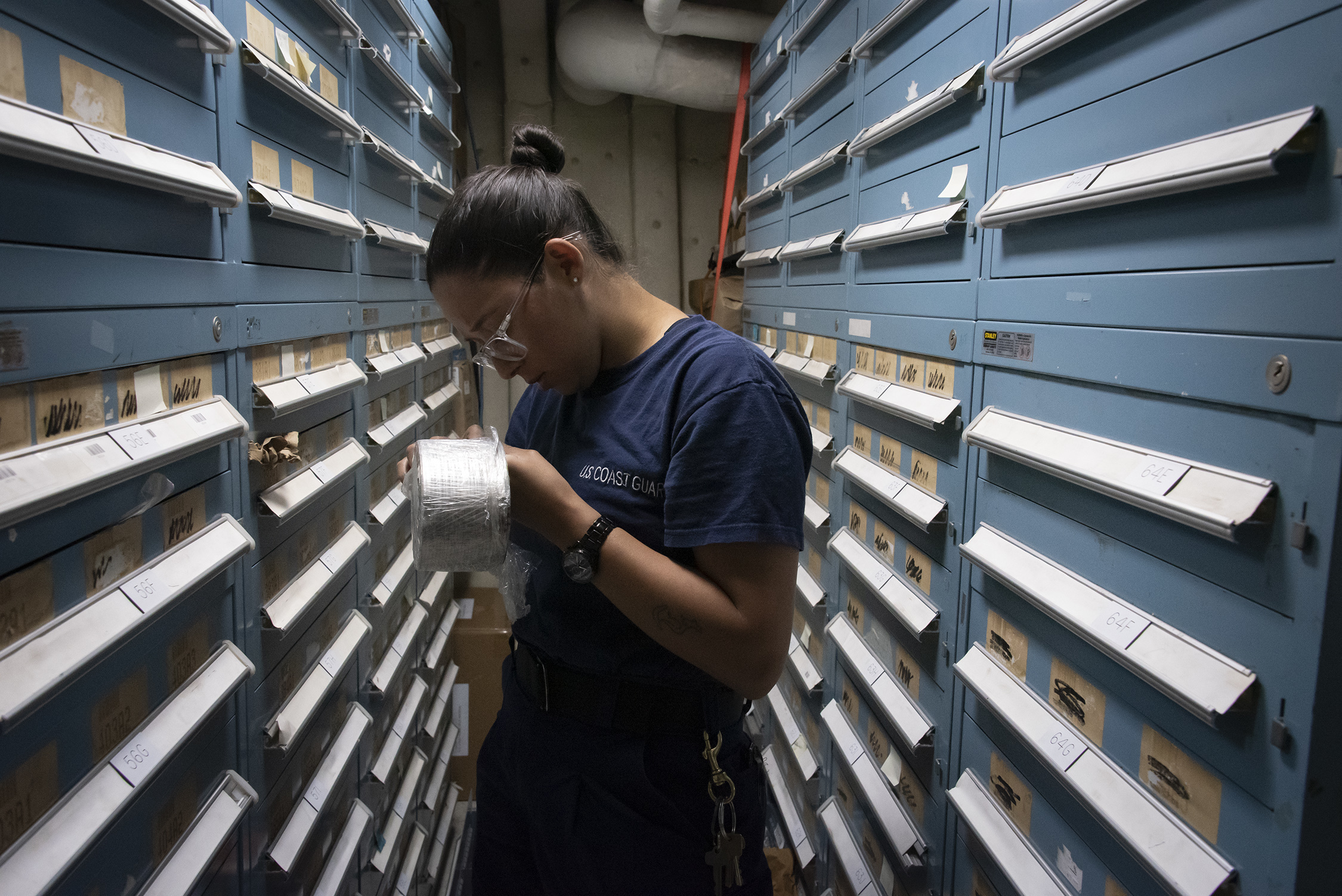
Some new personnel efforts, such as two-year enlistments and other actions, might encourage some “to come in and test the waters,” Schultz said. “I think we’ve got a great brand.” And while he’s supporting a program to cover 66 percent of tuition assistance, “I’d like to get to 100 percent,” he said. “All those things are competitive,” he said, adding that “we’re hiring.”
The Coast Guard is offering two-year active-duty enlistments, which may draw in potential candidates who initially might not want to serve longer. They would serve four years in the drilling Reserve and two years in the Individual Ready Reserve, which he said would also grow the Reserve component.
The Coast Guard is creating five new officer recruiter positions, in part to help broaden diversification within the 2,500-member active duty officers. “We’ll put those in some key locations,” he said.
Members who leave active duty but serve in the Reserve Component now have an option to defer involuntary activation for one year from the date of Reserve affiliation. A program called “Flex-PAL” allows reservists to train closer to where they live, and the Coast Guard is “creating billets around hubs where we can rotate reservists through different unit types within a geographical region,” he said.
With 2,000 additional afloat and support billets coming as the cutter fleet grows, the Coast Guard stood up a Sea Duty Readiness Council “to challenge ourselves to think differently about how we crew and maintain our cutters,” he said. “To think differently about how we appropriately recognize the challenge and sacrifice of going to sea. I have challenged this group to explore all out-of-the-box ideas.”
Extremism and Effects on Recruiting and Retention
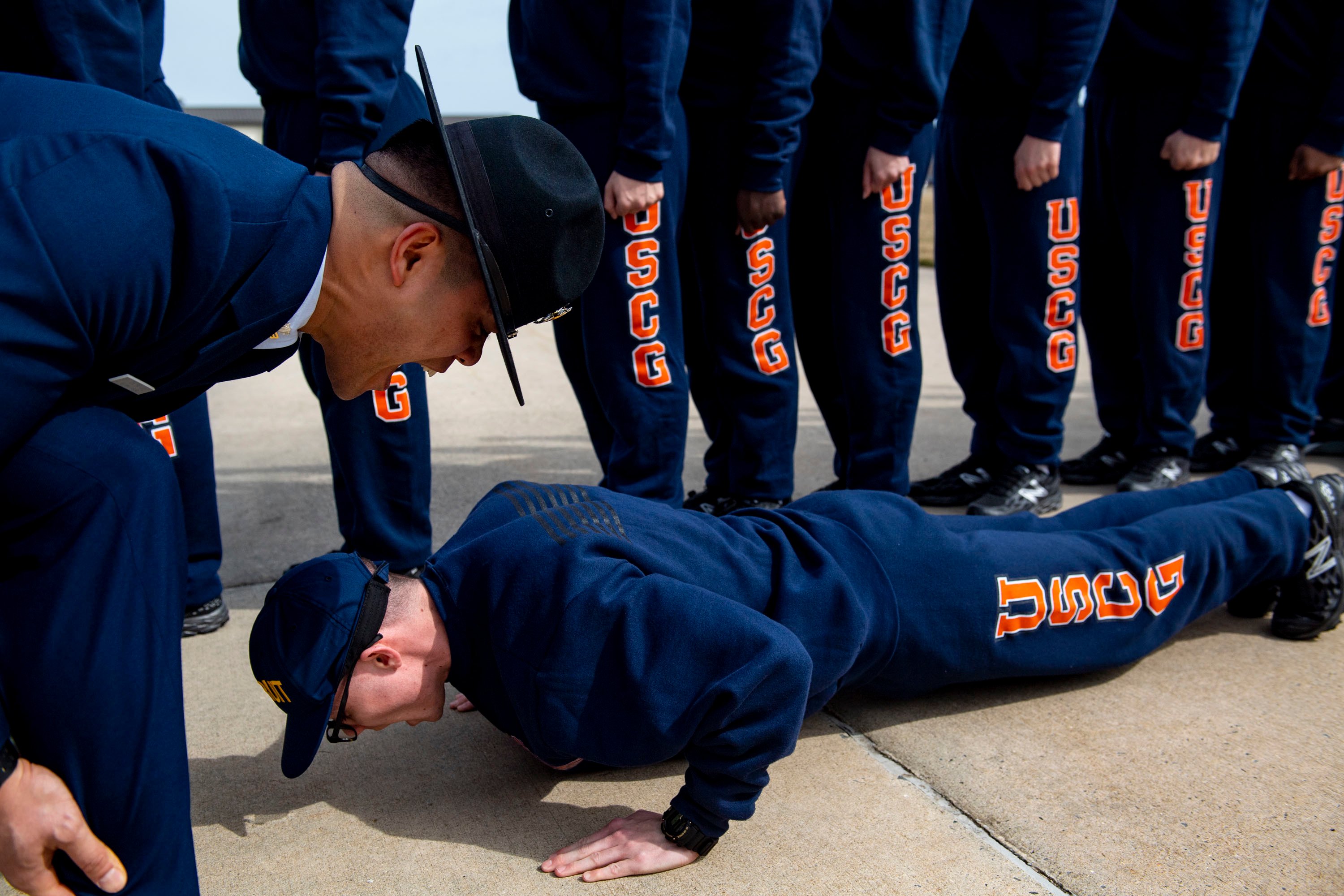
Official U.S. Coast Guard photos by Petty Officer 2nd Class Richard Brahm.
Coast Guard units are in the process of holding mandatory safety standdowns, which Defense Secretary Lloyd Austin ordered to address extremism in the armed services. Schultz told reporters he doesn’t think the Coast Guard has an extremist problem but said “I’d probably be kidding myself” if he dismissed the possibility. “The numbers surprised me,” he said of data he’s seen.
“I think there’s a little bit of a wake-up call. So I’m not going to be naïve and say there’s probably no one in our ranks,” he said. “We did not have any Coast Guardsmen in the Capitol, and I’m happy to know that.”
“We want to send a clear signal that there’s no place for extremist views in the Coast Guard, and if you want to harbor those viewpoints that are incompatible with service in the Coast Guard, you might want to consider employment elsewhere,” he added.
Some recent polls showed lower public trust in the U.S. military, a concern Schultz noted could hurt recruiting and spur more parents to dissuade their children from joining because of perceptions of extremism among some in uniform. That can hurt U.S. influence overseas, he said, and “it does have a slight chilling effect on recruiting in the Coast Guard.”





